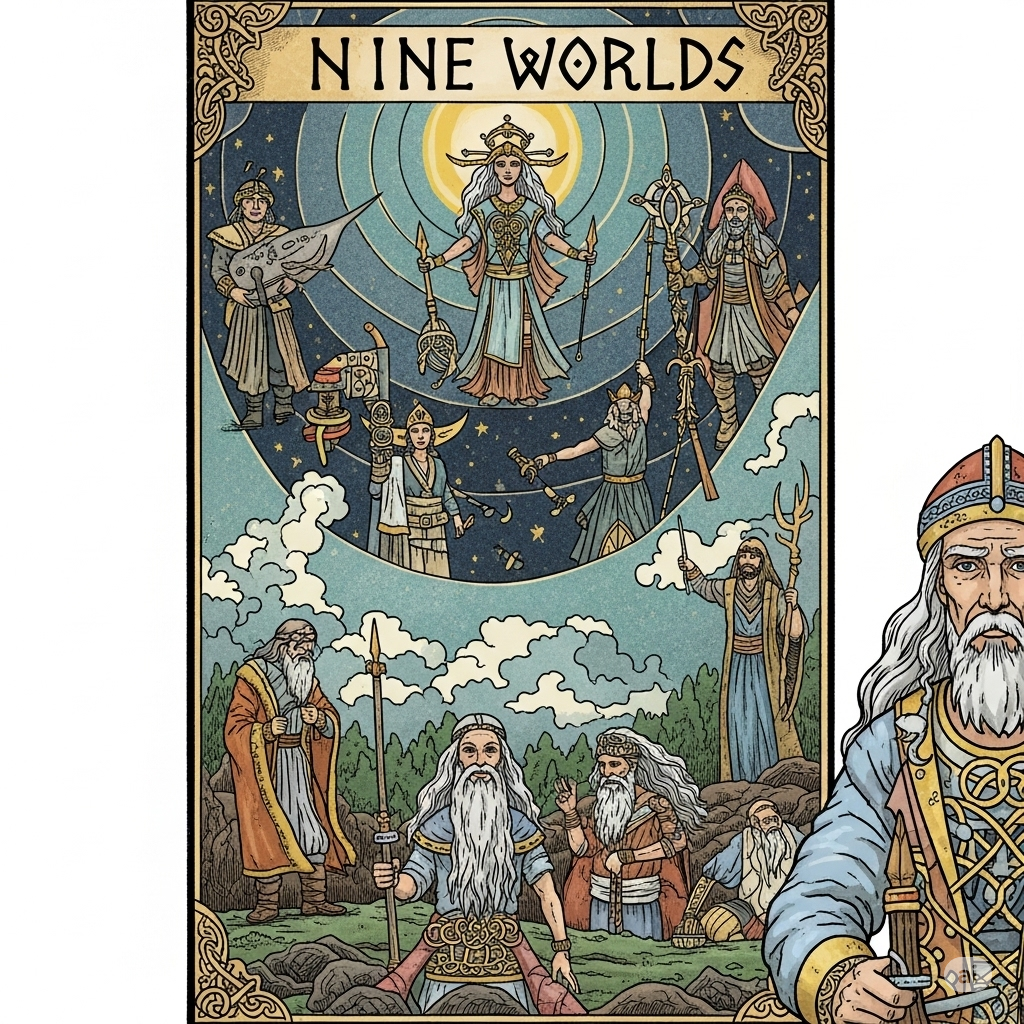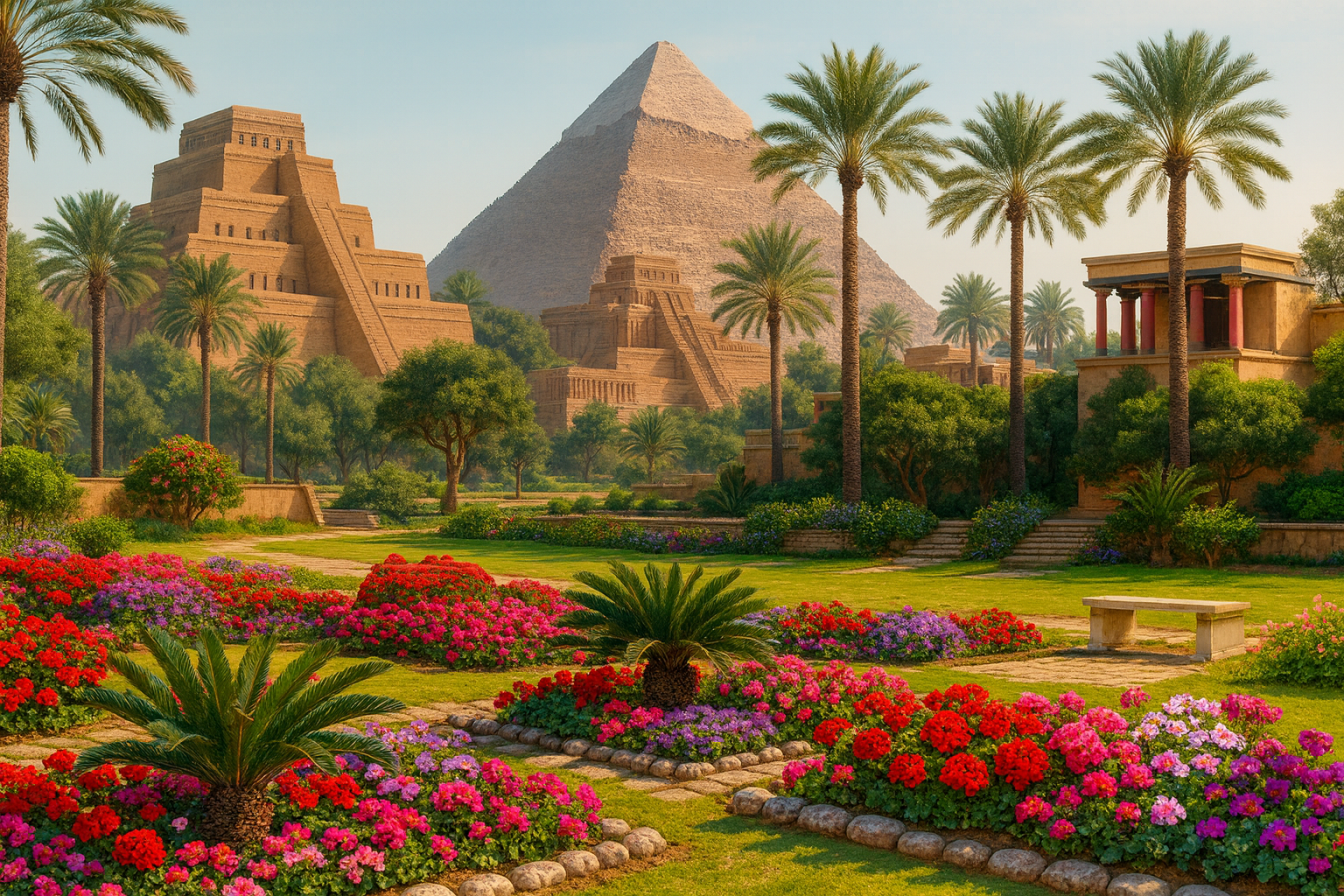Explore the Norse concept of the Nine Worlds, their connections, and how they shaped Viking beliefs.
Norse mythology paints a vivid and complex picture of the cosmos—a layered reality made up of Nine Worlds, each with its own characteristics, inhabitants, and mythological significance. Far from being a static myth, the Nine Worlds formed the foundation of how the Vikings understood existence, spirituality, and their place in the universe. Let’s delve into these worlds and how they were interconnected in the vast tree of life known as Yggdrasil.
Yggdrasil: The Cosmic Axis
At the center of Norse cosmology stands Yggdrasil, the World Tree—a massive ash tree that spans the cosmos and connects all Nine Worlds. Its roots and branches extend into the different realms, serving as a bridge between gods, humans, giants, and the dead. This sacred tree is not just a symbol; it’s the spine of the Norse universe, a living structure linking all of reality.
The Nine Worlds: Realms of Gods, Mortals, and Myths
Though sources like the Poetic Edda and Prose Edda don’t always list the Nine Worlds explicitly, scholars have reconstructed them based on textual clues and oral traditions. Here are the widely accepted Nine Worlds:
Asgard
The realm of the Aesir gods, including Odin, Thor, and Frigg.
A golden, fortified land of divine power, connected to Midgard by the rainbow bridge Bifröst.
Asgard represents order, divine wisdom, and warfare.
Midgard
The human world, literally “Middle Enclosure.”
It is encircled by a great ocean and connected to Asgard via Bifröst.
Midgard is protected by the gods but always under threat from outside forces.
Vanaheim
Home of the Vanir gods, associated with fertility, prosperity, and magic.
The Vanir later merged with the Aesir after a divine war, reflecting themes of reconciliation and balance.
Jotunheim (or Jötunheimr)
Realm of the Jötnar, or giants.
A chaotic, untamed world of elemental power, often in opposition to Asgard.
Despite the hostility, the gods frequently interact (and intermarry) with the giants.
Alfheim
The luminous realm of the Light Elves.
Ruled by the god Freyr, this world represents beauty, inspiration, and possibly ancestral spirits.
Elves were considered semi-divine beings, sometimes linked to nature and the afterlife.
Svartalfheim (or Nidavellir)
The world of dwarves (Svartálfar), master craftsmen and smiths.
It lies underground and is filled with incredible forges and mines.
The dwarves created many magical items used by the gods, including Thor’s hammer, Mjölnir.
Niflheim
A world of ice, mist, and eternal cold.
One of the primordial realms, it contains the frozen river Élivágar and the well Hvergelmir, source of many waters.
It is closely associated with death and the early stages of cosmic creation.
Muspelheim
A fiery, scorching realm, home to the fire giants (Múspellsynir) and their leader, Surtr.
Muspelheim is the counterpart to Niflheim and played a role in the creation myth, where fire met ice to begin the world.
In the prophecy of Ragnarök, Surtr will set the world ablaze.
Helheim (or Hel)
The land of the dead who did not die a warrior’s death.
Ruled by the goddess Hel, daughter of Loki.
It’s a cold, shadowy realm that reflects Norse beliefs about the afterlife—neither heaven nor hell as later defined, but a resting place beyond Midgard.
Interconnectedness and Symbolism
These Nine Worlds were not isolated domains but interconnected spheres of influence and interaction. Gods traveled between them, as did souls, monsters, and messengers. The dynamic between order (Asgard), chaos (Jotunheim), life (Midgard), and death (Helheim) created a balanced cosmology, where each world had a role to play in the eternal cycles of creation and destruction.
The World Tree, Yggdrasil, not only physically connected these realms but also symbolized the Norse understanding of life as an interconnected web. Its roots reached into the depths of wisdom and death, while its branches touched the divine and the unknown.
Shaping Viking Worldview
The Nine Worlds weren’t just myths—they were a mental map for the Norse people. They explained natural phenomena, the afterlife, the divine hierarchy, and moral values. They gave context to life’s unpredictability and framed death not as an end, but a journey to another realm.
From epic sagas to runestone carvings, the influence of these cosmological beliefs is everywhere in Viking culture. They informed how people lived, fought, died, and remembered their ancestors.
Conclusion
The Norse myth of the Nine Worlds is a testament to a people deeply attuned to the rhythms of the natural and spiritual world. These realms, with their vibrant personalities and eternal interconnections, offered the Vikings not just a mythology, but a profound philosophical structure for understanding the universe. In the branches of Yggdrasil, they found meaning, order, and the divine threads that bound all things together.







